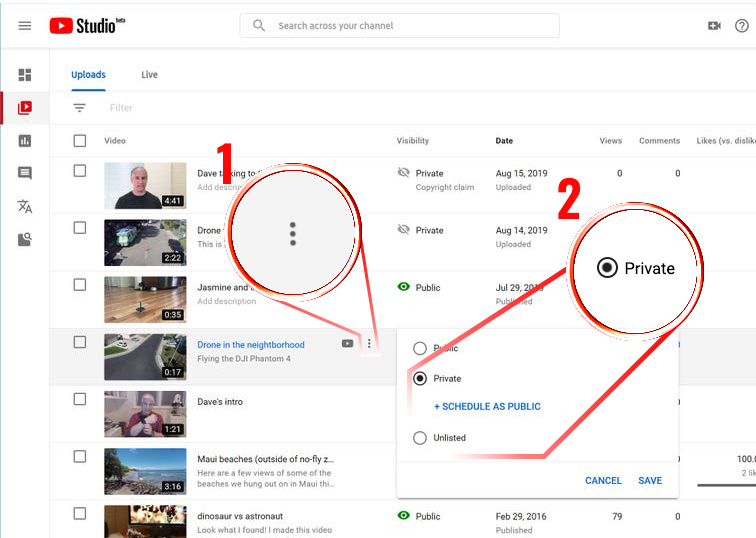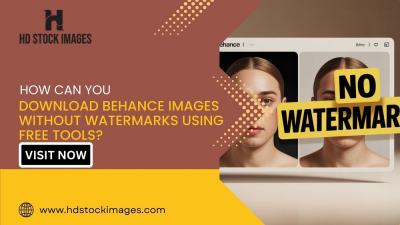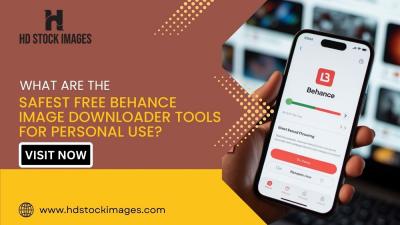When diving into the world of YouTube, one of the first things many creators encounter is the concept of privacy. You might be wondering, “Can I keep my content private?” Well, you're in luck! YouTube offers a range of privacy settings that allow you to control who sees your videos and channel activity. Understanding these settings not only helps in protecting your content but also in maintaining a certain level of intimacy with your audience. Let's explore what these privacy settings entail and how they can be tailored to fit your needs!
Types of YouTube Channels and Their Privacy Options

YouTube is a diverse platform with a variety of channels, each having different privacy options suitable for their content and audience. Here are the main types of YouTube channels and how they manage privacy:
- Personal Channels:
If you’re just starting out and want to share your hobbies or experiences, a personal channel might be right for you. You can set your entire channel to private, meaning only the people you invite can view your videos. This is perfect for sharing family moments or personal thoughts without broadcasting them to the world.
- Business Channels:
For brands and businesses, maintaining a certain level of privacy is crucial. You can choose to make certain videos unlisted, which means they won’t show up in searches but can be shared via a link. This can be useful for promotional videos meant only for select clients or partners.
- Educational Channels:
Even educators can benefit from YouTube’s privacy features. Many choose to use unlisted videos for class materials or tutorials shared only with students. This ensures that sensitive content stays confined to a specific audience.
- Public Channels:
Finally, public channels are meant for maximum exposure. But even creators here can selectively use privacy settings to protect specific videos from the public eye while still offering a broad range of content.
In summary, understanding the privacy settings of your YouTube channel can significantly impact your content strategy. Whether you opt for a personal touch or a more public presence, YouTube has the tools to help you navigate privacy effortlessly!
How to Set Your YouTube Channel to Private
If you're looking to create a more private space on YouTube, you've come to the right place! Setting your YouTube channel to private is a straightforward process, and I'm here to guide you through it step by step. Let's dive right in!
To set your YouTube channel to private, follow these simple steps:
- Sign In: Start by signing into your YouTube account. Make sure it’s the account for the channel you want to make private.
- Go to Your Channel: Click on your profile picture in the top right corner and select “Your Channel” from the dropdown menu.
- Customize Channel: Click on the “Customize Channel” button. This will take you to the YouTube Studio dashboard.
- Channel Settings: In the YouTube Studio menu, go to the “Settings” option located in the bottom left corner.
- Privacy Settings: In the settings menu, choose “Channel” from the options on the left, and then navigate to the “Advanced Settings” tab. Here, you’ll find options for privacy.
- Toggle Privacy Options: Look for the section that allows you to set the visibility of your channel. You might need to select “Private” or adjust settings for uploaded videos individually as well.
- Save Changes: Don't forget to click the “Save” button to apply your new privacy settings!
And voila! Your YouTube channel is now set to private. Keep in mind that while a private channel restricts public view, your subscribers will still be able to see your content if you allow it.
Limitations of a Private YouTube Channel
While a private YouTube channel can provide a sense of security and exclusivity, it’s not without its limitations. So, let’s explore what you should know about the constraints of a private channel.
Here are some notable limitations:
- Restricted Audience: Only specific users that you invite can see your content. This can limit your reach significantly compared to a public channel, which anyone can access.
- No Search Visibility: Videos on a private channel won’t show up in search results. If you want to grow your audience, this could be a major drawback.
- Approval Process: Invited users need to have a Google account to view your private videos. This means you’ll be managing who can and can’t access your content.
- Limited Interactions: Private channels often have fewer opportunities for engagement. Viewers can’t comment or like videos, which may diminish community interaction.
- Sharing Challenges: Sharing your content with a broader audience is not feasible. Private videos cannot be embedded on other websites or shared on social media platforms.
In summary, while setting your channel to private can offer control over your content, it comes with trade-offs. If you're focusing on a closed audience, understanding these limitations will help you make the most of your private YouTube experience!
5. Alternatives to a Private YouTube Channel
If you’re thinking about keeping your YouTube content under wraps, a private channel might not be your only option. Fortunately, there are several alternatives that will allow you to control who sees your videos while still offering a level of engagement. Here are some alternatives to consider:
- Unlisted Videos: This is a great option if you want to share your videos with a select group of people. Unlisted videos won’t show up in search results or on your channel, but anyone with the direct link can view them. This is perfect for sharing with friends or a specific audience.
- Members-Only Content: If you’re looking to limit your audience while still allowing for engagement, consider creating a membership program. Platforms like Patreon or YouTube’s membership feature let you share exclusive videos with your subscribers for a fee, creating a sense of community.
- Scheduled Releases: If privacy is a concern but you still want your content to be public, consider pre-scheduling your videos. You can control when they go live and give your audience a heads-up, allowing you to prepare for comments or potential backlash.
- Playlist Settings: You can categorize your videos into private playlists, allowing you to control visibility even within a larger public channel. Share the playlist link selectively to maintain privacy with specific content.
These alternatives will help you strike a balance between wanting some privacy while still maintaining a level of interaction with your audience!
6. Conclusion on YouTube Privacy and Content Sharing
In the world of YouTube, understanding privacy settings is crucial for creators striving to balance exposure and control. While a private channel offers complete seclusion, it may not serve those wishing to engage with a wider audience. Alternatives like unlisted videos and member-only content can provide a medium in which you control who sees your content without completely shutting out your potential viewers.
In conclusion, here are some essential takeaways on YouTube privacy:
| Factors to Consider | Options Available |
|---|---|
| Desired Audience | Private, Unlisted, Members-Only |
| Engagement Level | Comments, Sharing, Community Features |
| Content Control | Scheduled Releases, Playlist Settings |
Ultimately, it depends on what you hope to achieve with your channel. Embracing available privacy settings while leveraging creative ways to share your videos can lead to meaningful content creation without sacrificing your comfort level. Choose wisely, and happy vlogging!










